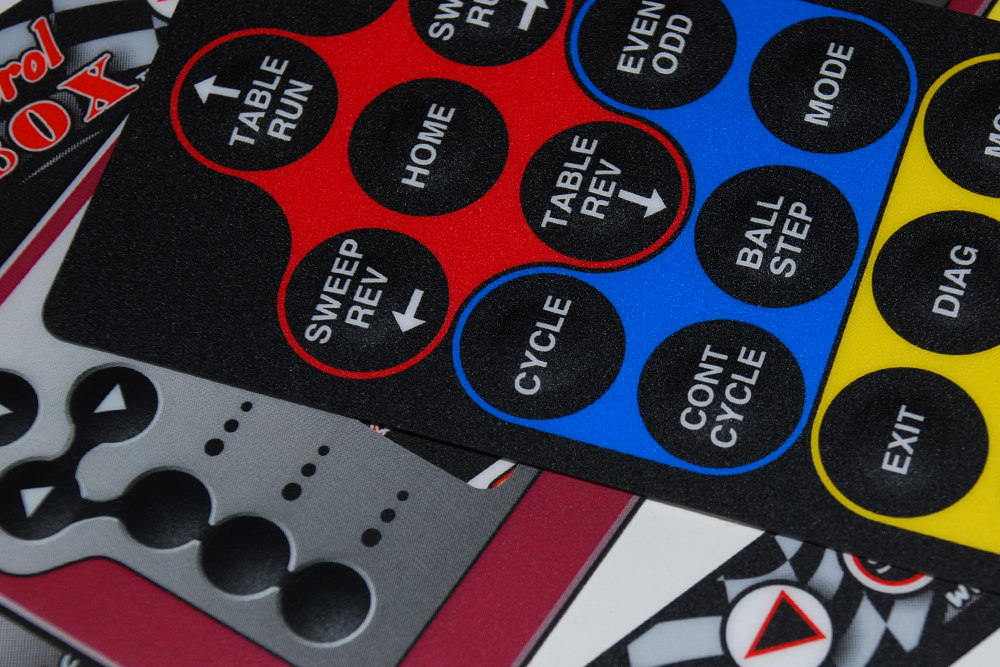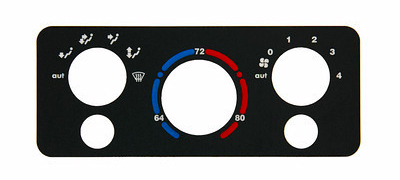How to Choose the Most Suitable Graphic Overlays for Different Uses
How to Choose the Most Suitable Graphic Overlays for Different Uses
Blog Article
Recognizing Just How Graphic Overlays Job to Enhance Your Imaginative Jobs
Graphic overlays serve as a pivotal element in the realm of creative jobs, boosting both visual interaction and audience interaction. The effective integration of these overlays needs cautious factor to consider of design concepts and purposes.
What Are Graphic Overlays?
Graphic overlays are aesthetic aspects that are positioned on top of a base picture or user interface to enhance interaction and customer experience. They serve different purposes, consisting of providing additional info, guiding individual interaction, and enhancing aesthetic allure. Usual applications of graphic overlays can be found in electronic interfaces, marketing, and instructional products.

Graphic overlays are typically developed using style software application, enabling designers to manipulate shade, dimension, and transparency to achieve the wanted impact. They can be fixed or vibrant, with animations that attract the viewer's eye and improve involvement. The critical use of visuals overlays not only improves aesthetic hierarchy yet also aids in providing a coherent and clear message. As such, understanding exactly how to effectively implement graphic overlays is essential for designers aiming to elevate their creative jobs.

Advantages of Using Graphic Overlays
Making use of visuals overlays can substantially enhance the efficiency of aesthetic communication across various mediums. One of the primary benefits is the capability to communicate complicated details succinctly. By layering graphics, message, and photos, overlays facilitate the discussion of data in a more digestible layout, making it less complicated for target markets to understand key principles swiftly.
Moreover, visuals overlays can enhance aesthetic allure, accentuating specific elements within a style. This is specifically beneficial in marketing and advertising, where recording the viewer's passion is critical. The critical use shades, shapes, and typography in overlays can produce a cohesive and engaging aesthetic narrative, enhancing brand recognition.
Furthermore, visuals overlays give flexibility in design. They allow creators to adapt web content for different systems without starting from scrape, ensuring consistency across different channels. This flexibility is vital in today's electronic landscape, where material must be maximized for diverse devices and styles.
Kinds Of Graphic Overlays
When thinking about the different kinds of graphic overlays, it is important to recognize their varied applications across different industries. Graphic overlays can be classified mainly right into 3 kinds: functional, decorative, and informational.
Functional overlays are made to enhance the usability of a product. Commonly found in electronic tools, these overlays frequently give responsive comments with raised buttons or distinctive surface areas, improving customer communication. They can also act as why not try this out a safety layer, securing the underlying components from wear and tear.
Ornamental overlays concentrate on visual enhancement, allowing brands to express their identification via lively layouts and personalized graphics. These overlays prevail in product packaging, advertising and marketing, and point-of-sale materials, where aesthetic appeal is critical for attracting consumers.
Informational overlays, on the other hand, are used to share crucial information or guidelines. They can be seen in applications such as signs, customer handbooks, and instructional graphics, where quality and readability are extremely important.
Each type of visuals overlay offers a special objective, adding to the general efficiency of imaginative projects while attending to details needs within numerous industries. Comprehending these differences is crucial for picking the appropriate overlay for your project.
Ideal Practices for Application
To ensure the effective implementation of visuals overlays, it is essential to establish a clear understanding of the task's purposes and the specific requirements of the end-users. Begin by conducting comprehensive research to determine the target audience and their choices, as this will inform style choices and functionality.
Following, produce a comprehensive strategy that describes the overlay's assimilation, purpose, and format procedure. This plan must include interface factors to consider, making certain that overlays improve as opposed to obstruct the individual experience - Graphic Overlays. Consider the aesthetic pecking order and maintain uniformity in layout components, such as color fonts, systems, and symbols, to promote brand name comprehensibility
Examining is essential; gather feedback from a representative sample of users to identify possible issues and locations for renovation. Iterate on the design based on customer input and efficiency data. Additionally, guarantee compatibility across various tools and platforms to take full advantage of accessibility.
Devices for Creating Overlays
Producing reliable graphic overlays needs the right devices to translate layout concepts into useful applications. Various software application and systems are available, each customized to specific needs and ability degrees.
Adobe Photoshop and Illustrator are sector standards, offering considerable capabilities for producing and adjusting overlays. These devices provide sophisticated functions such as layer management, blending modes, and vector graphics, allowing developers to develop premium and detailed overlays.
For those seeking a more this easy to original site use technique, Canva and Figma are exceptional choices (Graphic Overlays). Canva's intuitive interface enables individuals to produce overlays promptly making use of pre-designed layouts, while Figma assists in collaborative layout in real-time, making it ideal for groups
Furthermore, open-source choices like GIMP and Inkscape offer robust capabilities without the associated prices of proprietary software program. These devices enable adaptability in layout and can fit different data styles, guaranteeing compatibility across different platforms.

Final Thought
In verdict, visuals overlays act as effective devices for boosting imaginative jobs by supplying visual clarity, aesthetic appeal, and brand name uniformity. Their diverse applications, ranging from useful to decorative, emphasize their convenience in interaction. Complying with best practices and making use of suitable tools guarantees effective execution and maximizes the influence of overlays. By recognizing the essential principles and advantages connected with graphic overlays, makers can dramatically enhance the quality and efficiency of their visual communications.
Graphic overlays serve as a crucial element in the world of creative tasks, improving both aesthetic communication and target market engagement.Graphic overlays are usually produced making use of design software program, allowing developers to manipulate openness, shade, and size to accomplish the preferred result.Furthermore, visuals overlays can boost visual charm, attracting attention to particular components within a design.Furthermore, visuals overlays provide versatility in layout.In verdict, graphic overlays serve as effective devices for enhancing innovative jobs by giving aesthetic clarity, visual allure, and brand consistency.
Report this page